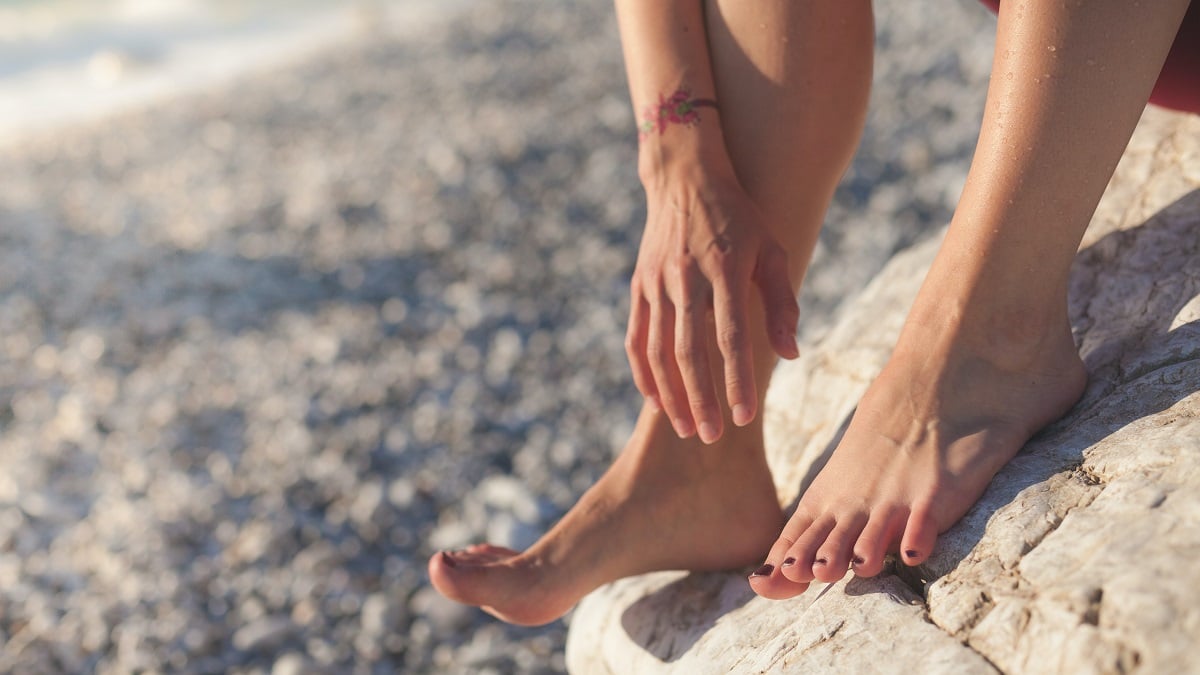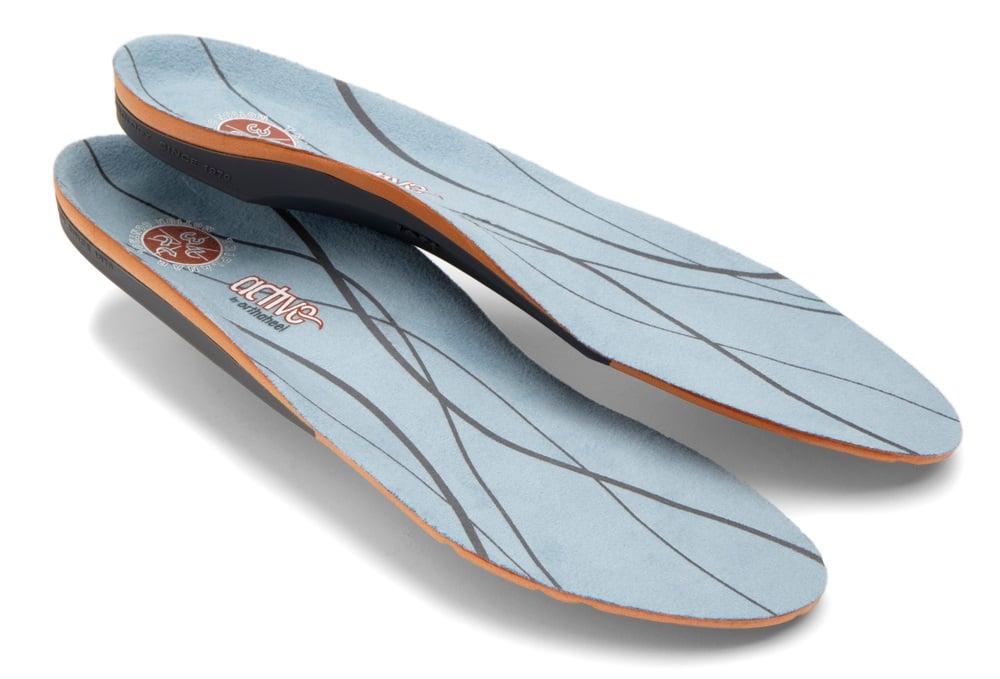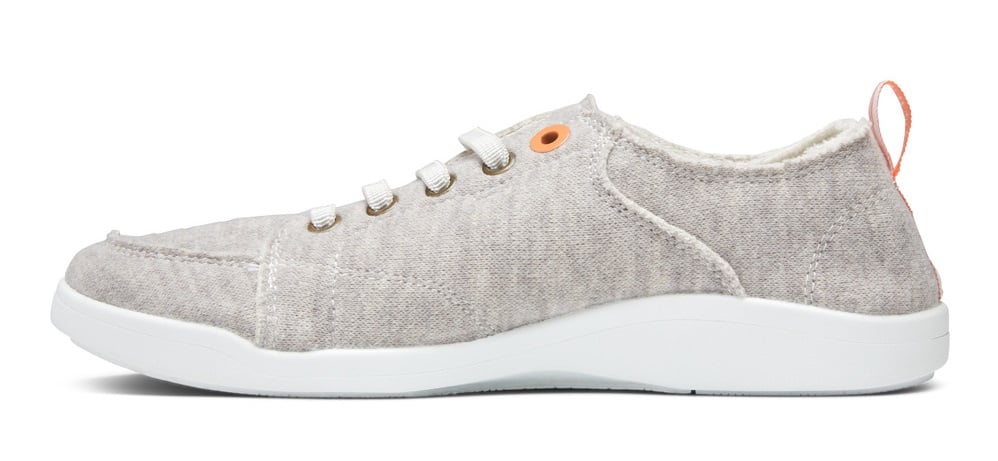
Bunions can be a real pain—literally and figuratively. But what causes bunions? They occur when the big toe pivots toward the other toes, causing the bone at the lower joint of the big toe to jut outward in the opposite direction. The result is a bony lump that may hurt chronically or lead to further foot pain and other various problems ranging from blisters to bursitis.
Whether you’re dealing with a bit of redness or a painful protrusion, you might be wondering about potential remedies to your foot deformity. So, can bunions be reversed? The only way to completely stop the foot deformity from progressing is through a surgical procedure. However, there are a handful of ways to treat the issue and find relief from discomfort, including Vionic orthotics. For more information, keep reading!
Bunion Reversal and Treatment
Bunions (hallux valgus) take years to develop and don’t always cause foot pain.¹ But for many people, they result in ongoing tenderness and irritation. The wrong shoes can make this foot condition worse, putting pressure on the protrusion and creating uncomfortable friction.
Since our feet have much less fat than the rest of our bodies, this pressure on the ligaments can be abrasive. Merely standing up and walking around can become incredibly painful, sometimes leading to a blister, callus, ingrown toenail, swelling, or infection.
There are a few ways to address a severe bunion. This includes having foot surgery, stretching, doing foot exercises, pampering your feet, and reconsidering your footwear. Here’s what you should know.
Surgery for Bunions
If you’re wondering can bunions be reversed, there’s really only one way to go about it, and that’s bunion surgery. The procedure usually starts with what’s called an ankle block, a local anesthetic that numbs you from the ankle down.²
Next, the orthopedic surgeon will likely remove your bunion using one of three approaches. With an osteotomy, the toe joint is cut and then realigned. Then there is an exostectomy, which involves removing the bump from the joint without a realignment. The last option is an arthrodesis, in which the damaged joint is replaced with metal plates and screws.
Recovery from bunion surgery can take anywhere from six weeks to six months.³ While the success rates are promising, it’s a major procedure. With that said, there’s a good chance your provider will recommend trying other remedies before booking the surgical procedure.
Stretch Your Toes
Stretching can help relieve some symptoms of bunion pain.⁴ With your shoes off, start by wiggling your toes for about 30 seconds at a time to reduce pressure on the joints.
Then try fanning your toes out so that there’s space between each one. Hold the stretch for a few counts, then release and repeat.
Additionally, you can place a tennis ball underneath the ball of your foot. Slowly move it back and forth and around in circles to stretch and massage the soft tissue underneath your big toe. Massaging with your hands can be beneficial as well.

Do Foot Exercises
In addition to stretching, there are various exercises you can do to prevent sore feet. Strengthening your foot may help with a bunion because weakened muscles can make walking more painful, especially if you’re putting pressure on other areas to reduce tension on your toe.
Try these foot exercises if you have bunions:
- Standing up or sitting in a chair with your feet flat on the floor, lift up all your toes. Hold this position for five to ten seconds, then release.
- Standing up or sitting in a chair with your feet flat on the floor, lift up all your toes and fan them out. Next, reach your pinky toe down toward the floor and your big toe down in the opposite direction. Hold this position for five to ten seconds, then release.
- Sitting in a chair with your feet flat on the floor and your knees at a 90-degree angle, lift up your heels and simultaneously press down with your big toe down. Hold this position for five to ten seconds, then release.
Like any new exercise, it might take some time to build up the strength to complete multiple sets. Try doing each of these at least once the first time, and slowly work your way up to ten sets. Additionally, doing them every day will have the biggest impact.
Give Your Feet Some TLC
Sometimes, all your feet need is a little TLC. You may have heard of the RICE method, which stands for rest, ice, compression, elevation. Like tight-fitting shoes, compression can actually make matters worse, as it strains the protruding bone. However, the other three can offer effective relief.
While resting, try soaking your feet in a bathtub or small basin filled with warm water and Epsom salt. This can reduce inflammation and alleviate some swelling. When you’re done, slather on a rich moisturizer, and either self-massage or ask a partner to rub your feet.
You might also try icing your bunions to relieve soreness and calm inflammation. A plastic bag filled with ice cubes, a proper ice pack, or a classic back of frozen peas works great.
After a long day, you can elevate your feet with or without ice. This will reduce swelling and might offer some pain relief, as it draws blood and fluids away from the inflamed area.
Besides the RICE method (or rather the RIE method), over-the-counter pain relievers can help too. NSAIDs (nonsteroidal anti-inflammatory drugs) include ibuprofen, aspirin, and naproxen, all of which address inflammation and temporarily relieve aching feet.
How Orthotic Footwear Helps Correct and Prevent Bunions
Though some people don’t experience any symptoms, other bunion-sufferers face persistent redness, swelling, and pain. Stretching, strengthening, and pampering your feet can go a long way. But for folks with bunions, the first (and sometimes most effective) course of action is getting better footwear.
Wear the Proper Shoe Size
Narrow styles and shoes that are too small can worsen bunions and potentially even cause them. That’s why getting the exact measurements is critical. Believe it or not, most people don’t know their true shoe size and end up wearing the wrong length or width.
Since the bony bump extends the width of your foot, some individuals benefit from buying wide widths. For others, a wide toe box is sufficient. Also, keep in mind that sizes vary among brands. Having your measurements on hand will help ensure you get the proper size with every pair.

Wear Supportive Footwear
Besides wearing the correct shoe size, we recommend looking for supportive styles. The pleasantly roomy orthotic footwear from Vionic boasts built-in arch support, contoured footbeds, generous toe boxes, and durable outsoles that promote a natural stride. Take a look for yourself at some of the best sandals for bunions at Vionic today.
Many of our men’s and women’s shoes also have adjustable straps and uppers. This allows for a customized fit and ensures there’s not too much pressure on the bunion.
Try Orthotic Inserts
When shoes lack the necessary support, orthotics can offer relief. Most closed-toe pairs come with some sort of insoles, which you can remove and replace with the supportive shoe insert.
Your podiatrist (foot doctor) can likely make you custom orthotics, though over-the-counter options can be just as effective as a prescription. Check out the podiatrist-designed shoe inserts from Vionic, which have medium-density molded bases for maximum support and all-day comfort. They’re affordable, lightweight, convenient, and can be placed in just about any shoe.
When you try our orthotics or slip into your first pair of Vionic shoes, you’ll feel the difference immediately. Browse our collections today and get more information on common feet concerns. Wondering what is foot pronation? We offer professional insight into questions similar to overpronation vs underpronation, and how to correct overpronation. Find the support your feet need today with Vionic!
External sources:
- “Bunions”. Mayo Clinic. https://www.mayoclinic.org/diseases-conditions/bunions/symptoms-causes/syc-20354799
- Erica Roth. “Bunion Removal”. Healthline. Updated on September 16, 2018, https://www.healthline.com/health/bunion-removal#procedure
- “Bunion Surgery”. Johns Hopkins Medicine. https://www.hopkinsmedicine.org/health/treatment-tests-and-therapies/bunion-surgery
- “Minimize, Manage, and Prevent Bunions”. Healthline. Updated on March 8, 2019, https://www.healthline.com/health/how-to-get-rid-of-bunions#15-tips


Leave a Reply